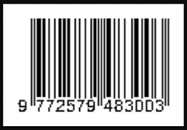MOBILE PHONE DAN FLASHCARDS DALAM MEMPERKAYA KOSAKATA BAHASA INGGRIS SISWA ENRICHING ENGLISH VOCABULARY THROUGH MOBILE PHONE AND FLASHCARDS
DOI:
https://doi.org/10.32550/teknodik.v17i3.566Keywords:
handphone, flashcards, pemerolehan kosa kata.Abstract
Belajar kosakata adalah langkah awal untuk belajar bahasa asing Namun, hasil belajar bahasa Inggris siswa di Indonesia masih dibawah rata-rata. Hal ini mungkin disebabkan oleh keterbatasan kosakata siswa yang mempengaruhi kemampuan mendengar, berbicara, menulis dan membaca. Studi ini bertujuan untuk melihat apakah penggunaan handphone dan flashcards dapat meningkatkan pemerolehan kosakata siswa dan juga untuk melihat persepsi siswa kelas X terhadap penggunaan handphone dalam belajar kosakata. Penelitian ini menggunakan nonrandomized kontrol group pretest dan posttest. Sampel penelitian ini adalah siswa kelas X SMA Negeri 4 Lahat. Data dalam penelitian ini diperoleh dengan menggunakan test dan angket. Data yang diperoleh dianalisa dengan menggunakan one-way ANOVA. Hasil penelitian ini menunjukkan bahwa ada peningkatan yang signifikan dalam pemerolehan kosakata siswa dengan menggunakan handphone dan flashcards setelah diberikan perlakuan. Pemerolehan kosakata siswa dengan menggunakan handphone lebih tinggi dibandingkan dengan siswa yang menggunakan flashcards. Dari studi ini diketahui juga bahwa siswa kelas X SMA Negeri 4 Lahat memiliki persepsi positif terhadap pembelajaran kosakata dengan menggunakan handphone.
Learning vocabulary is the fundamental step to learn a foreign language. Vocabulary gives contribution to the learners to perform or practice their skills better. However, Indonesian students’ English score is still below average. It may be caused by their limited vocabulary which influence their listening comprehension, speaking, writing and reading abilities. Therefore, the objectives of this study were to see whether the use of mobile phone and flashcard could improve students vocabulary achievement and also to see the perceptions of the tenth grade students of learning vocabulary via mobile phone. The nonrandomized control group pretest-posttest design was applied in this study. The sample of the study was 90 first year students of Sekolah Menengah Atas Negeri 4 Lahat. The primary data were obtained by means of the tests and questionnaire. The obtained data were analyzed using one-way ANOVA. The results of the study showed that there was significant progress in the vocabulary achievement of the students using vocabulary learning program in mobile phones and flashcards after the treatment. The vocabulary achievement of the students using vocabulary learning program in mobile phone was higher than using flashcards. From this study it was also found that the tenth grade students had positive perception of learning vocabulary via mobile phones.
References
Ananova. 2001. Grades rise after text message teaching tip plan. Retrieved October 7, 2010, from http:// www.ananova.com/news/story/sm_381440.html
Bruton, A. 2007. Vocabulary learning from dictionary reference in collaborative EFL translational writing. System, 35, 353-367.
Cavus, N., & Ibrahim, D. 2009. M-learning: An experimental in using SMS to support learning new English language words. British Journal of Educational Technology, 40(1),78-79.
Erten, Ã. H., & Tekin, M. 2008. Effects on vocabulary acquisition of presenting new words in semantic setsversus semantically unrelated sets. System, 36, 407-422.
Farini. 2010. Improving reading comprehension and vocabulary achievement by using collaborative strategic reading (CSR) to the eleventh grade students of SMA Negeri 18 Palembang. Unpublished Thesis. Palembang: Graduate School of Sriwijaya University.
Graddol, D. 1997. “Can English survive the new technologies?†IATEFL Newsletter. Issue No.138, August-September 1992, p.13.
Kornell, N. 2009. Optimizing learning using flashcards: Spacing is more effective than cramming. Applied Cognitive Psychology Journal, 23, 1297-1317.
Lismalayani. 2010. Increasing vocabulary and reading comprehension achievement of the eleventh grade students of SMA Negeri 19 Palembang through reciprocal strategy. Unpublished Thesis. Palembang: Graduate School of Sriwijaya University.
Lu, M. 2008. Efectiveness of vocabulary learning via mobile phone. Journal of Computer Assisted Learning, 24, 515-525.
National Reading Panel. 2000. Report of the National Reading Panel: Teaching children to read.Washington,
D.C.: National Institute of Child Healthand Human Development.
Payani, D., Diem, C.D., & Purnomo, M.E. 2003. The readability levels of the EFL texts and the reading comprehension levels of the state high school students in Palembang. Lingua Jurnal Bahasa dan Sastra, 5
(1), 43 – 69.
Ramey, W. D. 2010. Vocabulary flashcards. Available at (http://www.inthebeginning.org/ntgreek/lesson6/ vocabulary flashcards.pdf) accessed on 4 February 2011.
Stone, A. 2004. Designing scalable, effective mobile learning for multiple technologies. In J. Attwell & C. Savill-Smith (Eds), Learning with mobile devices. London: Learning and Skills development Agency.
Thornton, P., & Houser, C. 2005. Using mobile phones in English education in Japan. Journal of Computer Assisted Learning, 21, 217–228.
McConotha, D., Praul, M., & Lynch, M.J. 2008. Mobile learning in higher education: An empirical assessment of a new educational tool. The Turkish Online Journal of Educational Technology, 7(3).1-8.
Kornell, N. 2009. Optimizing learning using flashcards: Spacing is more effective than cramming. Applied Cognitive Psychology Journal, 23, 1297-1317.
Levy, M., & Kennedy, C. 2005. Learning Italian via mobile SMS. In A. Kukulska-Hulme & J. Traxler (Eds), Mobile learning: A handbook for educators and trainers (pp. 76-83). London: Routledge.
Milrad, L. 2003. Mobile learning: challenges, perspectives, and reality. In K. Nyiri (Ed.), Mobile learning: Essays on philosophy, psychology and education (pp. 151-164). Vienna, Austria:Passagen Verlag.
Motiwalla. 2007. Mobile learning: A framework and evaluation. Computers and Education, 49, 581-596.
Soloway, E., Jackson, S. L., Klein, J., Quintana, C., Reed, J., Spitulnik, J. et al. 1996. Learning theory and practice: case studies of learner-centered design.CHI 96 Proceedings, ACM. Retrieved June 7, 2010, from http://sigchi.org/chi96/proceedings/papers/Soloway/es_txt.htm.
Stone, A. 2004. Designing scalable, effective mobile learning for multiple technologies. In J. Attwell & C. Savill-Smith (Eds), Learning with mobile devices. London: Learning and Skills development Agency.
Trinder, J. 2005. Mobiles and technologies and systems. In A. Kukulska-Hulme& J. Traxler (Eds). Mobile learning:
A handbook for educators and trainers. pp. 8-24. London :Roudledge.
Downloads
Published
How to Cite
Issue
Section
Citation Check
License
Please download and complete the Form, Copyright Transfer, and Ethics Statement Form. The following is provided at the time of submitting the text (Upload Additional Files):









